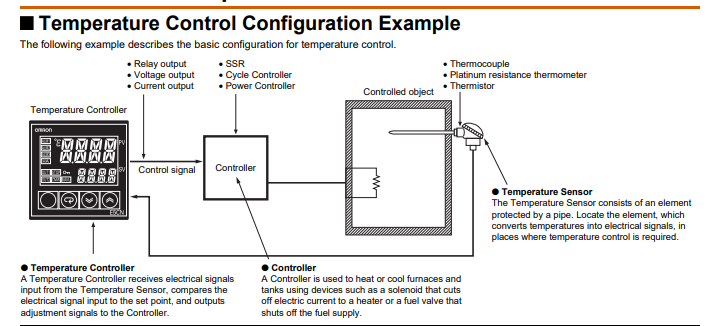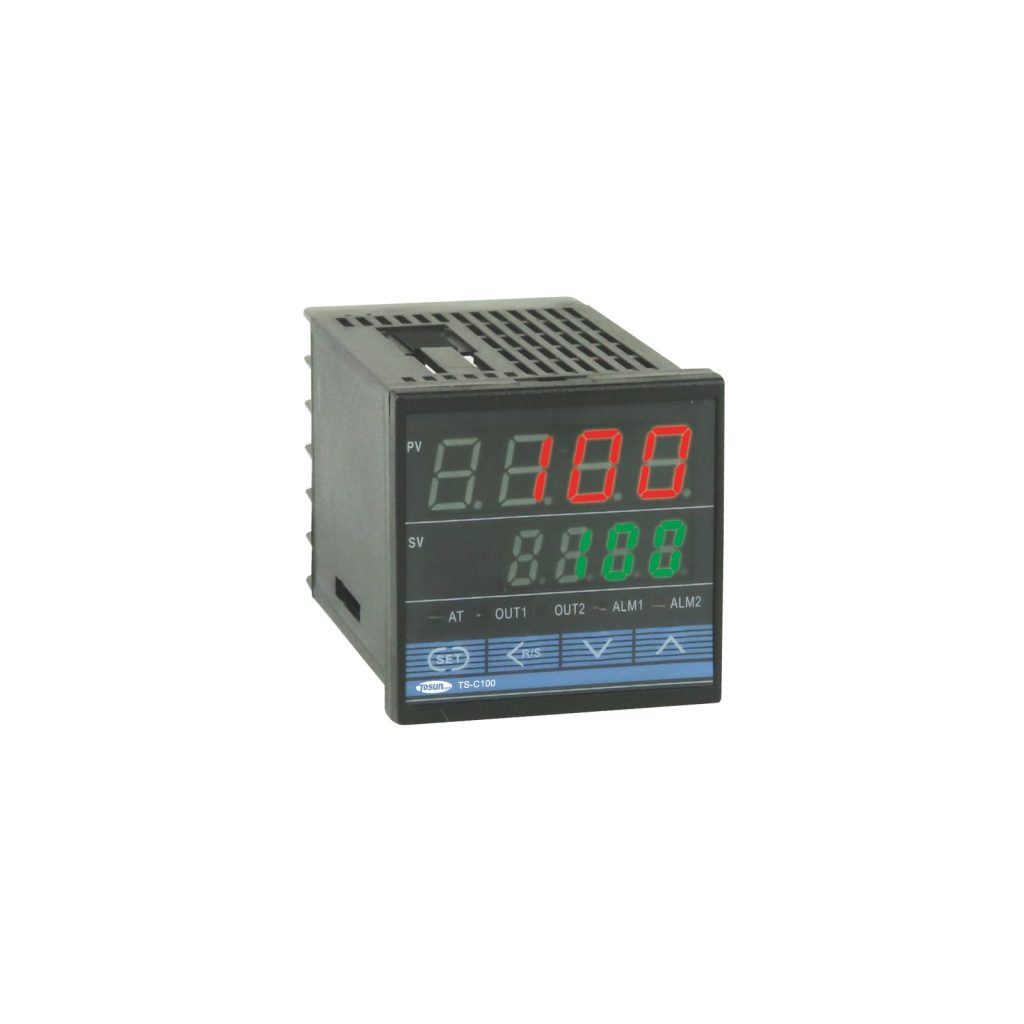Temperature Controller 101: A Complete Guide
Table of Contents
ToggleIn modern industries and daily life, regulating temperature is crucial for ensuring the efficiency, safety, and longevity of systems and equipment.
That makes temperature control systems vital. This guide will help you understand the basics of a temperature controller, how it works, and how Tosunlux’s digital temperature controllers can provide reliable solutions for your needs.
What Is a Temperature Controller?
What is a temperature controller? A temperature controller is a device designed to maintain a desired temperature within a specific environment. It monitors and adjusts the heating or cooling processes of an area and it does this by comparing the actual temperature to a setpoint and making corrections as necessary.
Whether you’re working with a refrigeration system, a kiln, or a process requiring precision heating, a temperature control system ensures that temperatures remain stable, preventing potential damage to equipment or compromised product quality.
Types of Temperature Controllers
What are the types of temperature controllers? The types of temperature controllers, or at least some of the most common ones, are:
- On/Off Controllers;
- Proportional Controllers; and
- PID Controllers
On/Off Controllers
These controllers are simple and ideal for applications where precise control isn’t that important. What do they do? They switch the output fully on when the temperature falls below the setpoint and fully off when it exceeds it.
Proportional Controllers
Proportional controllers are more sophisticated than on/off controllers. They modulate the output to ensure smoother control by reducing the power as the temperature nears the setpoint, minimizing overshooting and undershooting.
PID Controllers
PID (Proportional-Integral-Derivative) controllers are the most advanced of all controller types. They continuously calculate the difference between the setpoint and the actual temperature, applying corrections that take into account current trends in temperature changes. This leads to highly accurate temperature regulation.
How Does a Digital Temperature Controller Work?
So, how does a digital temperature controller work? A digital temperature controller works by using sensors to measure the temperature of a given system. The sensor—usually a thermocouple or RTD (Resistance Temperature Detector)—feeds data back to the controller, which then adjusts the heating or cooling mechanisms accordingly.
The basic operation process includes:
- Input: The sensor detects the current temperature and sends the signal to the controller.
- Comparison: The controller compares the current temperature with the desired setpoint.
- Control Action: Based on the difference between the actual temperature and the setpoint, the controller initiates corrective actions (either heating or cooling).
- Output: The controller adjusts the output to maintain the desired temperature.

Related Reading: Temperature Controller Problems Troubleshooting
Features of Tosunlux Digital Temperature Controllers
Tosunlux offers a range of high-performance digital temperature controllers that cater to various industries, ensuring precise and reliable temperature regulation. These controllers are equipped with advanced features, including:
- Multiple Input Types: Tosunlux temperature controllers support different sensor types, including thermocouples and RTDs, providing flexibility in application.
- User-Friendly Interface: The digital display allows users to easily set and monitor temperature parameters, making operation intuitive and straightforward.
- Compact Design: Tosunlux controllers are designed to save space while providing maximum efficiency in performance.
- High Precision: Our digital temperature controllers offer precise control with PID technology, ensuring minimal fluctuations in temperature regulation.
- Safety Features: Built-in safety mechanisms protect equipment from overheating or freezing, enhancing the overall reliability of your temperature control system.
Explore Tosunlux’s range of temperature controllers here.
Why Is Temperature Control Important?
Why is temperature control important? Maintaining proper temperature is essential for multiple reasons: safety, quality control, and energy efficiency.
Safety
Overheating or underheating can cause equipment damage or even hazards like fire or explosion.
Quality Control
In industries like food processing or pharmaceuticals, maintaining the correct temperature ensures product integrity.
Energy Efficiency
A well-calibrated temperature control system reduces energy consumption by preventing unnecessary heating or cooling.
Applications of Temperature Control Systems
Digital temperature controllers are used across a wide range of industries and applications, such as:
Industrial Processes
In manufacturing, precise temperature control is necessary to maintain product quality and meet industry standards.
HVAC Systems
Heating, ventilation, and air conditioning systems rely on temperature controllers to regulate indoor environments.
Food Processing
Temperature control is vital in food production and storage, where maintaining optimal conditions is key to preserving freshness and safety.
Medical Equipment
Medical devices often require stable temperatures for proper functioning and sterility.
Refrigeration
In both commercial and domestic applications, temperature controllers help maintain the correct cooling levels for food and other perishable goods.
How to Choose the Right Temperature Controller
When selecting a temperature control system, consider the following factors:
- Application Requirements: The type of process or equipment you’re working with will determine the level of precision and control you need.
- Sensor Type: Choose a controller that is compatible with the sensors you use, such as thermocouples or RTDs.
- Control Method: Determine whether an on/off, proportional, or PID controller is most suitable for your application.
- Display and User Interface: A clear digital display and intuitive interface make it easier to monitor and adjust the temperature.
Tosunlux’s digital temperature controllers are designed with these factors in mind, offering customizable solutions that meet the needs of a variety of industries.
Related Reading: Choosing the Right Temperature Controller
Installation and Maintenance Tips
To ensure the proper functioning of your temperature controller, follow these best practices:
- Correct Sensor Placement: Position the temperature sensor in a location that accurately reflects the temperature of the system you’re controlling.
- Regular Calibration: Periodically calibrate your temperature controller to ensure accuracy over time.
- Proper Wiring: Follow manufacturer guidelines for wiring to avoid malfunctions or inaccurate readings.
- Routine Maintenance: Inspect the controller and sensor regularly to catch any issues before they affect the system.
For detailed installation instructions and maintenance guidelines, refer to the product manual or consult a Tosunlux expert.
The Perfect Temperature Controller for Your Needs
By understanding the basics of how a temperature controller works and the factors to consider when selecting one, you can ensure that your system runs smoothly and effectively.
If you’re looking for high-quality temperature controllers, Tosunlux has the products you need to achieve precise and consistent temperature regulation. Contact us today!
FAQ About Temperature Controller
1. What is a digital temperature controller?
A digital temperature controller is a device that regulates temperature by comparing the current value with a preset temperature and adjusting heating or cooling mechanisms to maintain stability.
2. How does a temperature control system work?
A temperature control system uses sensors to measure temperature, compares it to a setpoint, and activates heating or cooling processes to maintain the desired temperature.
3. What is the difference between on/off and PID controllers?
An on/off controller switches heating or cooling fully on or off, while a PID controller continuously adjusts to minimize temperature fluctuations, providing more precise control.
Tel: +86-577-88671000
E-mail: ceo@tosun.com
Skype: tosunelectric
Wechat: +86-139 6881 9286
WhatsApp: +86-139 0587 7291
Address: Room No.1001 Wenzhou Fortune Center,Station Road, Wenzhou, China
REQUEST A QUOTE
WhatsApp us
 : +86-139 0587 7291
: +86-139 0587 7291 English
English Español
Español Русский
Русский Français
Français العربية
العربية Português do Brasil
Português do Brasil Українська
Українська Türkçe
Türkçe Polski
Polski Nederlands
Nederlands Italiano
Italiano Bahasa Indonesia
Bahasa Indonesia हिन्दी
हिन्दी اردو
اردو አማርኛ
አማርኛ Հայերեն
Հայերեն ไทย
ไทย Монгол
Монгол فارسی
فارسی Shqip
Shqip Ελληνικά
Ελληνικά



